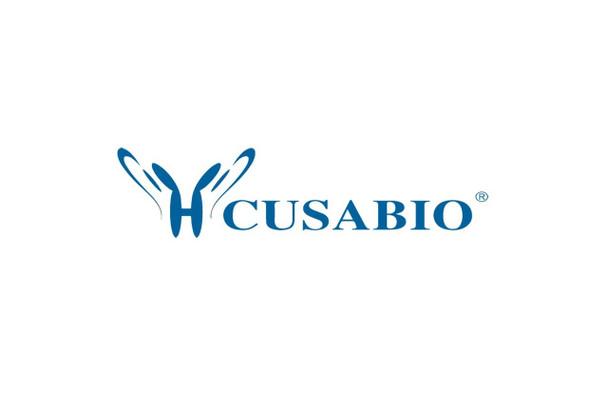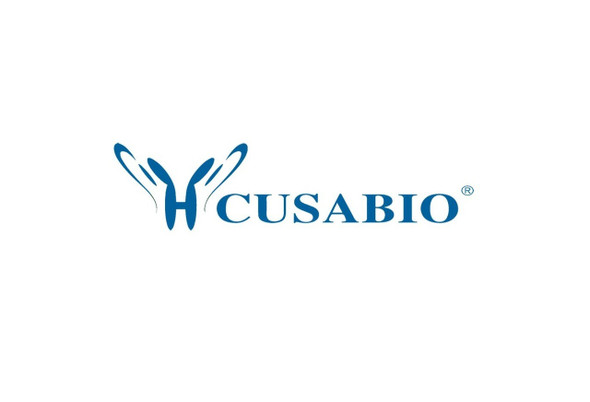Cusabio Human Recombinants
Recombinant Human Heat shock protein 75 kDa, mitochondrial (TRAP1), partial | CSB-EP618639HU1
- SKU:
- CSB-EP618639HU1
- Availability:
- 3 - 7 Working Days
Description
Recombinant Human Heat shock protein 75 kDa, mitochondrial (TRAP1), partial | CSB-EP618639HU1 | Cusabio
Alternative Name(s): TNFR-associated protein 1Tumor necrosis factor type 1 receptor-associated protein ;TRAP-1
Gene Names: TRAP1
Research Areas: Others
Organism: Homo sapiens (Human)
AA Sequence: STQTAEDKEEPLHSIISSTESVQGSTSKHEFQAETKKLLDIVARSLYSEKEVFIRELISNASDALEKLRHKLVSDGQALPEMEIHLQTNAEKGTITIQDTGIGMTQEELVSNLGTIARSGSKAFLDALQNQAEASSKIIGQFGVGFYSAFMVADRVEVYSRSAAPGSLGYQWLSDGSGVFEIAEASGVRTGTKIIIHLKSDCKEFSSEARVRDVVTKYSNFVSFPLYLNGRRMNTLQAIWMMDPKDVRE
Source: E.coli
Tag Info: N-terminal GST-tagged
Expression Region: 60-308aa
Sequence Info: Partial
MW: 54.5 kDa
Purity: Greater than 90% as determined by SDS-PAGE.
Relevance: Chaperone that expresses an ATPase activity. Involved in maintaining mitochondrial function and polarization, most likely through stabilization of mitochondrial complex I. Is a negative regulator of mitochondrial respiration able to modulate the balance between oxidative phosphorylation and aerobic glycolysis. The impact of TRAP1 on mitochondrial respiration is probably mediated by modulation of mitochondrial SRC and inhibition of SDHA.
Reference: The sequence and analysis of duplication-rich human chromosome 16.Martin J., Han C., Gordon L.A., Terry A., Prabhakar S., She X., Xie G., Hellsten U., Chan Y.M., Altherr M., Couronne O., Aerts A., Bajorek E., Black S., Blumer H., Branscomb E., Brown N.C., Bruno W.J. , Buckingham J.M., Callen D.F., Campbell C.S., Campbell M.L., Campbell E.W., Caoile C., Challacombe J.F., Chasteen L.A., Chertkov O., Chi H.C., Christensen M., Clark L.M., Cohn J.D., Denys M., Detter J.C., Dickson M., Dimitrijevic-Bussod M., Escobar J., Fawcett J.J., Flowers D., Fotopulos D., Glavina T., Gomez M., Gonzales E., Goodstein D., Goodwin L.A., Grady D.L., Grigoriev I., Groza M., Hammon N., Hawkins T., Haydu L., Hildebrand C.E., Huang W., Israni S., Jett J., Jewett P.B., Kadner K., Kimball H., Kobayashi A., Krawczyk M.-C., Leyba T., Longmire J.L., Lopez F., Lou Y., Lowry S., Ludeman T., Manohar C.F., Mark G.A., McMurray K.L., Meincke L.J., Morgan J., Moyzis R.K., Mundt M.O., Munk A.C., Nandkeshwar R.D., Pitluck S., Pollard M., Predki P., Parson-Quintana B., Ramirez L., Rash S., Retterer J., Ricke D.O., Robinson D.L., Rodriguez A., Salamov A., Saunders E.H., Scott D., Shough T., Stallings R.L., Stalvey M., Sutherland R.D., Tapia R., Tesmer J.G., Thayer N., Thompson L.S., Tice H., Torney D.C., Tran-Gyamfi M., Tsai M., Ulanovsky L.E., Ustaszewska A., Vo N., White P.S., Williams A.L., Wills P.L., Wu J.-R., Wu K., Yang J., DeJong P., Bruce D., Doggett N.A., Deaven L., Schmutz J., Grimwood J., Richardson P., Rokhsar D.S., Eichler E.E., Gilna P., Lucas S.M., Myers R.M., Rubin E.M., Pennacchio L.A.Nature 432:988-994(2004)
Storage: The shelf life is related to many factors, storage state, buffer ingredients, storage temperature and the stability of the protein itself. Generally, the shelf life of liquid form is 6 months at -20?/-80?. The shelf life of lyophilized form is 12 months at -20?/-80?.
Notes: Repeated freezing and thawing is not recommended. Store working aliquots at 4? for up to one week.
Function: Chaperone that expresses an ATPase activity. Involved in maintaining mitochondrial function and polarization, downstream of PINK1 and mitochondrial complex I. Is a negative regulator of mitochondrial respiration able to modulate the balance between oxidative phosphorylation and aerobic glycolysis. The impact of TRAP1 on mitochondrial respiration is probably mediated by modulation of mitochondrial SRC and inhibition of SDHA.
Involvement in disease:
Subcellular Location: Mitochondrion, Mitochondrion inner membrane, Mitochondrion matrix
Protein Families: Heat shock protein 90 family
Tissue Specificity: Found in skeletal muscle, liver, heart, brain, kidney, pancreas, lung, placenta and bladder. Expression is higly reduced in bladder cancer and renal cell carcinoma specimens compared to healthy tissues, but it is increased in other type of tumors.
Paythway:
Form: Liquid or Lyophilized powder
Buffer: If the delivery form is liquid, the default storage buffer is Tris/PBS-based buffer, 5%-50% glycerol. If the delivery form is lyophilized powder, the buffer before lyophilization is Tris/PBS-based buffer, 6% Trehalose, pH 8.0.
Reconstitution: We recommend that this vial be briefly centrifuged prior to opening to bring the contents to the bottom. Please reconstitute protein in deionized sterile water to a concentration of 0.1-1.0 mg/mL.We recommend to add 5-50% of glycerol (final concentration) and aliquot for long-term storage at -20?/-80?. Our default final concentration of glycerol is 50%. Customers could use it as reference.
Uniprot ID: Q12931
HGNC Database Link: HGNC
UniGene Database Link: UniGene
KEGG Database Link: KEGG
STRING Database Link: STRING
OMIM Database Link: OMIM










